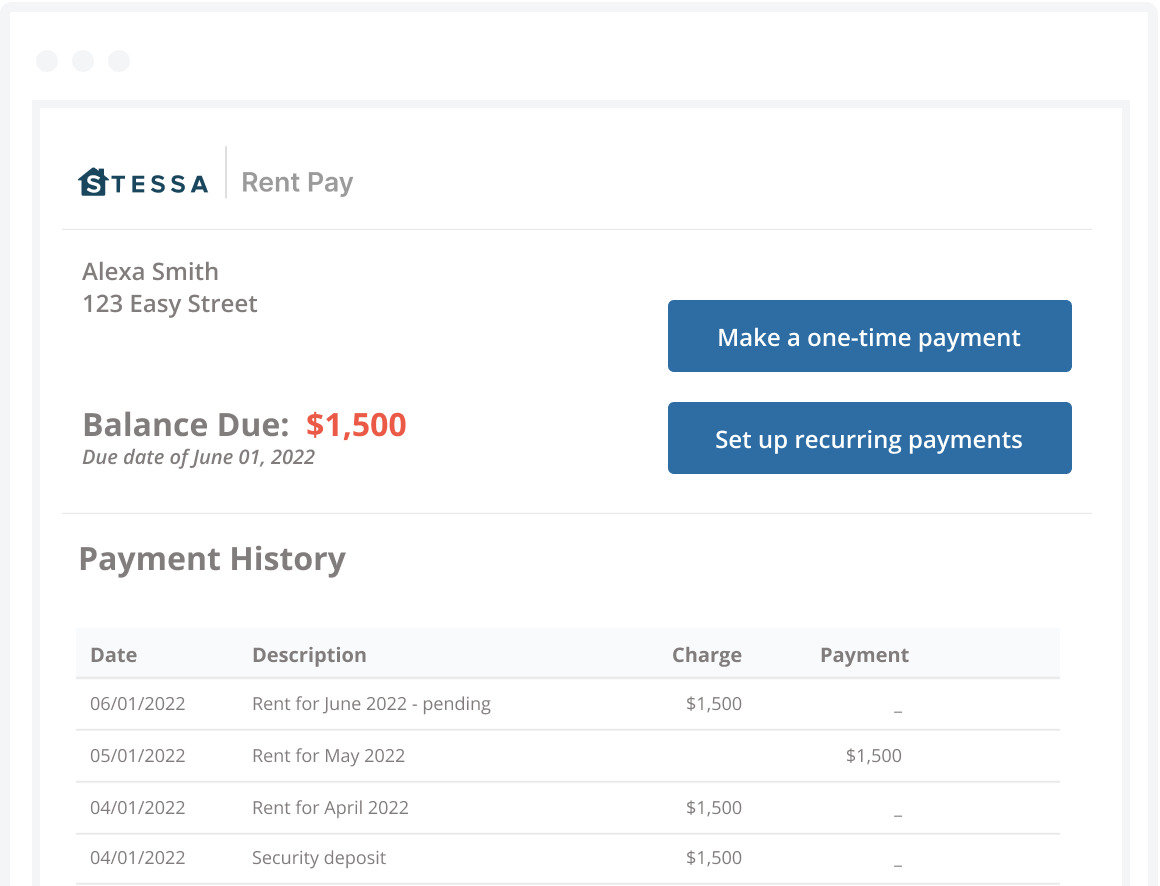When a tenant offers to pay several months of rent in advance, it might seem like a financial win. However, this creates a specific accounting situation you need to handle properly.
Prepaid rent is more than just an early payment. It’s payment for a rental period that hasn’t happened yet.
Let’s say you receive both December and January’s rent on December 1st. January’s payment counts as prepaid rent—even though it crosses into a new tax year.
The consequences of improper classification can result in incorrectly reported income on your Schedule E and tax return, potentially raising red flags with the IRS. In this short post, we’ll walk through exactly how to record, track, and recognize prepaid rent with step-by-step instructions designed specifically for landlords managing their own books.
How to track and record prepaid rent
Most small landlords use cash basis tax reporting, which makes prepaid rent rules simple: report income when you receive payment, regardless of which period it covers.
Let’s look at an example:
Your tenant pays $1,000 for December rent and another $1,000 for January rent, all on December 1st. For your bookkeeping records:
- Record $2,000 deposit to your Bank Account on December 1st
- Record $2,000 as Rent Income
- Report the entire $2,000 on your Schedule E for the current tax year
This shows the simplicity of cash basis accounting. You don’t need to track when rent is “earned” or create liability accounts. The money becomes taxable income the moment it enters your bank account.
But, while tracking prepaid rent on a cash basis is relatively straightforward, digital tools can still save you time and reduce errors.
Stessa offers landlords a simple way to categorize income when received, making year-end tax preparation much easier. Some landlords also use basic spreadsheets to track payment dates, though this requires manual entry and runs the risk of making mistakes.
Avoiding common mistakes with prepaid rent
Even with the straightforward nature of cash basis accounting, landlords often make mistakes with prepaid rent. Knowing these common pitfalls can save you trouble at tax time.
Recording first and last month’s rent
When collecting first and last month’s rent at the beginning of a lease, both payments are considered income when received under cash basis accounting—even though the “last month” might be in the following year.
This practice secures your final month’s payment upfront. Remember, it’s taxable in the year you receive it, not when that final month occurs.
Mixing up prepaid rent with security deposits
Perhaps the most frequent error landlords make is confusing prepaid rent with security deposits. Though both involve collecting money upfront, they work differently:
- Prepaid rent pays for future occupancy and counts as immediate taxable income under cash basis accounting
- Security deposits aren’t income. They remain the tenant’s property that you hold against possible damages or unpaid rent and appear as a liability on your balance sheet.
If you mistakenly record a security deposit as prepaid rent, you’ll over-report your taxable income. Security deposits only become income when and if you actually apply them to unpaid rent or keep them for damages. At that point, the portion used converts from a held deposit to taxable rental income that should be reported on your Schedule E for the current tax year.
Inconsistent handling of year-end prepayments
Another common mistake occurs with December prepayments for January rent. Some landlords inconsistently treat these payments differently year to year, sometimes reporting them in the year received, and other times deferring them to the next year.
Consistency is key—always report prepaid rent as income in the year you receive it. Switching methods without proper justification can raise red flags with the IRS.
Forgetting to document the rental period covered
While cash basis accounting means you report income when received, you should still maintain clear records of which periods each payment covers. Without this documentation, you might face challenges like:
- Difficulty determining if a tenant is truly current on payments
- Confusion when tenants move out and you need to calculate prorated rent
- Complications when answering tenant disputes about payment history
Make sure each rent payment receipt clearly states both the payment date and the rental period covered.
Best practices for prepaid rent documentation
Proper documentation is key for smooth rental property accounting. It helps avoid confusion, supports your tax returns, and keeps your tenant rent roll clean.
- Issue detailed receipts. Provide tenants with receipts that clearly specify the payment date, amount, and which rental period(s) the payment covers. This creates a paper trail that protects both parties from future disagreements.
- Use payment descriptions in banking records. When depositing or recording rent payments in your financial accounts, include descriptions that indicate prepayment status (e.g., “Dec 2024 rent + Jan 2025 prepaid rent from Smith”).
- Document tenant communications. Save any written agreements or communications about prepaid rent arrangements, especially when offering advance payment discounts.
- Retain records for the recommended period. Keep all prepaid rent documentation for at least 7 years after filing the associated tax return, which aligns with the IRS guidelines for most audit scenarios.
Here’s the thing – you’re an investor, not a trained CPA. You can’t afford to get bogged down doing journal entries in Quickbooks. That’s why you need advanced software purpose-built for landlords. At Stessa, we built the system so you don’t have to.
Stessa provides landlords with specialized tools designed specifically for rental property accounting challenges like prepaid rent. The platform automatically connects to your bank accounts, eliminating manual data entry and reducing errors. When prepaid rent deposits hit your account, Stessa helps you categorize and track these payments properly according to tax guidelines.
Our automated accounting tools capture every rent payment—including prepaid amounts—and automatically assign them to the correct property, making it simple to maintain accurate records of which periods each payment covers. You can also easily automate your rent collection process, including payment reminders and late fees, reducing the likelihood of missed or late payments.

For tax time, Stessa generates proper Income Statements and Tenant Ledgers that clearly show when payments were received versus when they were earned, making Schedule E preparation straightforward even with complex prepaid rent situations.
The platform also provides secure document storage where you can upload and store lease agreements that specify prepaid rent terms, organizing them by property and date for easy access.
Go here to get started with Stessa for free.






